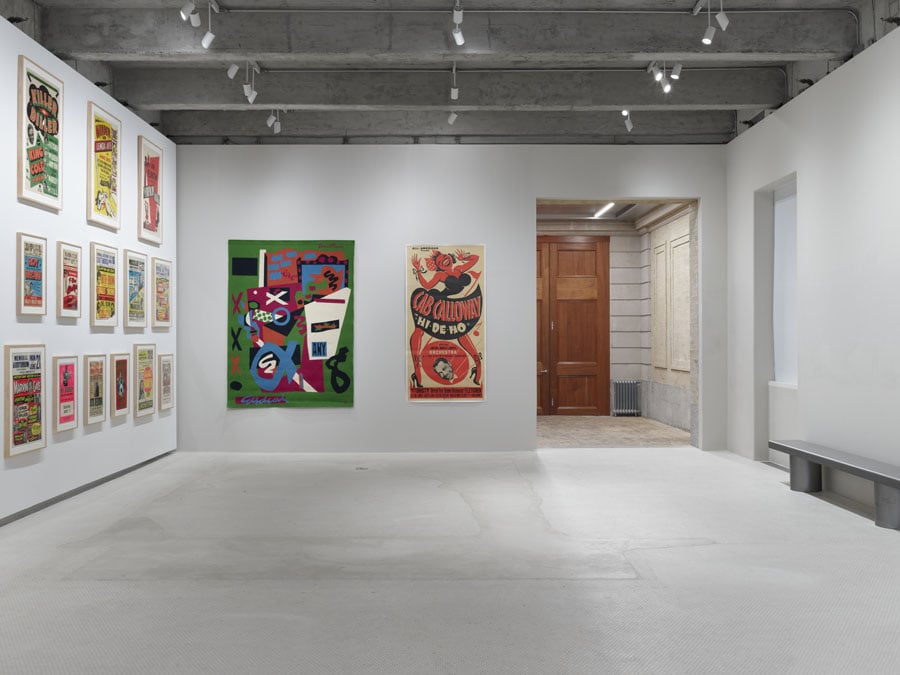Salon 94 Honors Black Cinematic, Sonic, and Visible Art

The exhibition, titled, Caldonia: Concert and Film Posters from the Collection of Ralph DeLuca, traces the partitions with dozens of printed ephemera documenting Black art, new music, and cinema from the 1920s via the 1960s. Some are triumphs of Modernism–a 1930 ad for Fat Waller and His Orchestra Bluebird Information and a 1964 advert for a collection of Thelonious Monk gigs, both ink on paper, capture the clean up-lined assurance and charisma of their topics. Others, like the Louis Jordan musical poster that offers the clearly show its title, positively vibrate with proto-Afro-futurism. A series of collages manufactured by Louis Armstrong in the late 1960s prove Satchmo could Dada as perfectly as he could blow the trumpet. Without a doubt, an total heritage of 20th century visible lifestyle can be traced through these objects. “The varieties of abstraction canonized as jazz, blues, swing, bebop, and rock ‘n’ roll are essential to the background of the United States and visible art,” says Salon 94 running director Andrew Blackley, “We’re so happy to work on a lush and vibrant context for it.”
The context is inherently as political as it is aesthetic. An artwork advisor and movie poster collector, DeLuca, spent some two many years waving paddles at auctions and exploring out promoters, printers, and estates to create this non-public archive. For the to start with time in many years, the general public can thrill at the graphic manage of explosive perform like the 1948 poster for the King Cole Trio vehicle Killer Diller, swoon at the star-energy exanimating in very small portraits of Butterfly McQueen and Jackie Mabley, and ache to see the film alone. But just one also miracles who positive aspects when these examples of pop lifestyle ephemera are reframed as fantastic artwork and priced appropriately.

of Ralph DeLuca
Courtesy of the artist and Salon 94, New York. Photo: Elisabeth Bernstein
An all-star band of critics and artists, such as Daphne A. Brooks and Stanley Whitney, tease out other political complexities in the fantastic and enough catalog. A 1938 poster for Chick Webb might be the to start with to mention Ella Fitzgerald by title. As the jazz pianist Yoko Suzuki notes, the poster shows the handsome facial area, but only the encounter, of Webb. He “was identified as ‘Chick’ since of his diminutive hunchback physical appearance,” Suzuki writes, as a end result of tuberculosis of the backbone. Chick “first opposed hiring [Fitzergerald] simply because she was not pretty enough.” Multi-shade, mass-market place posters ended up a medium only a number of decades old, but the aged information that sexual intercourse sells will come by means of loud and apparent.
However, the display is a vivid testimony to what may be misplaced when product lifestyle disappears. The author and educational, Shaka McGlotten, builds a bridge in between the fragility of the objects and the tenuous character of achievements for Black artists: “I am looking at that these functions could have been neglected,” they create. “I am not declaring that the genius of Ray Charles and Stevie Wonder was in dispute but somewhat that their achievements and enormous achievements had been not guaranteed.” The overall look of these objects resecures that assurance and returns lesser idols to a rightful prominence. The politics of memory are as fraught as they’ve ever been, but these objects verify legacies unbroken. Following all, McGlotten writes, “I use on-line platforms that nevertheless use the grammar of this layout space. That design language is however there.”








